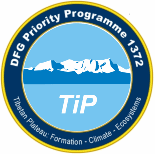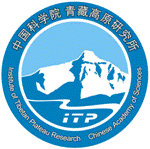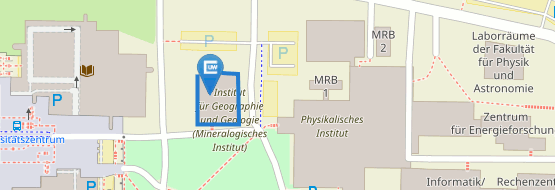Tibetan Plateau: Formation - Climate - Ecosystems (TiP)
Teilprojekt "Bridging Timescales of Tibetan Plateau Environmental Change: An Integration of Earth System Modeling with Modern and Paleoenvironmental Proxies"

 Das Tibetplateau ist das größte Gebirgsplateau der Erde und hat sich im Verlauf der letzten 50 Millionen Jahre gebildet. Die Heraushebung dieses Hochplateaus verursachte globale und regionale Veränderungen im Klima und Ozeanchemismus. Trotz seiner großen Bedeutung sind die geodynamischen Prozesse, die für die Plateaubildung verantwortlich sind, sowie die globale und regionale Klimaentwicklung während der Plateaubildung bis jetzt nur unzureichend erforscht.
Das Tibetplateau ist das größte Gebirgsplateau der Erde und hat sich im Verlauf der letzten 50 Millionen Jahre gebildet. Die Heraushebung dieses Hochplateaus verursachte globale und regionale Veränderungen im Klima und Ozeanchemismus. Trotz seiner großen Bedeutung sind die geodynamischen Prozesse, die für die Plateaubildung verantwortlich sind, sowie die globale und regionale Klimaentwicklung während der Plateaubildung bis jetzt nur unzureichend erforscht.
Innerhalb des DFG-Schwerpunktprogramms „Tibetan Plateau: Formation – Climate – Ecosystems (TiP)“ wird, in Kooperation mit der Universität Tübingen, versucht, die globalen und regionalen Klimaveränderungen während der Heraushebung des Tibetplateaus über Zeiträume von tausenden von Jahren (z.B. letzte Vereisung) bis hin zu geologischen Zeitskalen (50 Millionen Jahre) zu quantifizieren. Die Experimente sollen Einblicke in die Umweltveränderungen während der Heraushebung des Tibetplateaus geben und so die Basis für das Verständnis von heutigen und zukünftigen Klimaschwankungen in dieser Region bilden.
The Tibetan Plateau is the largest orogenic plateau on Earth and formed in response to continental collision over the last ~50 Million years. The formation of this high-elevation plateau surface is invoked for changes in global and regional climate, as well as in ocean chemistry. Despite their significance, the processes responsible for Tibetan Plateau formation and the evolution of global and regional climate during its formation are poorly resolved. In this proposal we build upon our previous related work on the Andean Plateau. Our focus is to quantify how global and regional climate have responded to Tibetan Plateau surface uplift over timescales ranging from millenial (e.g. last glacial maximum) to geologic (~50 Ma). More specifically, we will test the hypothesis that if Indo-Asian collision, Cenozoic plateau surface uplift, and glaciations are responsible for climate change, then appropriately parameterized paleoclimate simulations of these processes should predict the observed variability in Tibetan proxy data (e.g. d18O in soil carbonates, lacustrine climate archives), and quantify the paleoclimate and paleoelevation history of the plateau over different time scales. We will test this hypothesis through an integration of global and regional paleoclimate models with paleoclimate proxies. These experiments will bridge spatial and temporal timescales of environmental change over the plateau thereby forming a baseline for understanding modern and potential future climate variability over the plateau.
Teilprojekt-Verantwortlicher: Prof. Dr. Heiko Paeth
Ansprechpartner: Christian Steger


